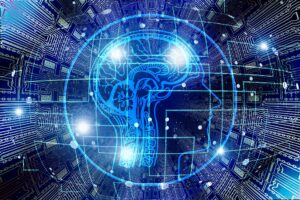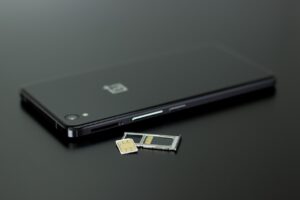Introduction
The Internet of Things (IoT) is a revolutionary technological paradigm that is reshaping the way we live, work, and interact with the world around us. At its core, IoT represents the interconnection of everyday objects and devices to the internet, enabling them to collect, exchange, and analyze data, and respond to changing conditions autonomously. In this article, we will delve into the concept of IoT, explore its various applications, and examine the profound impact it has on our daily lives.

-
Understanding the Internet of Things (IoT)
1.1 The Essence of IoT
IoT encompasses a vast ecosystem of interconnected devices, ranging from smartphones and wearable gadgets to household appliances, industrial machinery, and even urban infrastructure. These devices are equipped with sensors, processors, and communication modules that enable them to transmit and receive data via the internet.

1.2 Key Components of IoT Devices
- Sensors: Sensors are the sensory organs of IoT devices, capable of detecting changes in the environment. These can include temperature sensors, humidity sensors, motion detectors, and more.
- Connectivity: IoT devices rely on various communication protocols to connect to the internet. These can include Wi-Fi, Bluetooth, cellular networks, and Low-Power Wide-Area Networks (LPWANs).
- Data Processing: IoT devices often have embedded microprocessors or microcontrollers to process data locally before sending it to the cloud or other devices.
- Cloud Integration: IoT devices frequently send their data to cloud-based platforms for storage, analysis, and access from anywhere.

1.3 The Role of Data in IoT
Data is at the heart of IoT, serving as the lifeblood that fuels its applications. IoT devices generate a continuous stream of data, which can range from temperature readings and GPS coordinates to health metrics and environmental data. This data is processed, analyzed, and turned into actionable insights, enabling real-time decision-making and automation.

-
IoT in Daily Life: Applications and Impact
2.1 Smart Homes
One of the most visible and rapidly adopted aspects of IoT is the concept of the smart home. IoT-enabled devices such as thermostats, lights, security cameras, and appliances can be remotely controlled and automated to enhance comfort, convenience, and energy efficiency.
- Smart Thermostats: Devices like the Nest Thermostat learn user preferences and adjust heating and cooling accordingly, saving energy and reducing utility bills.
- Smart Lighting: IoT-connected lights can be controlled through smartphones or voice assistants, allowing users to create customized lighting scenarios for different moods or activities.
- Home Security: Smart cameras and doorbells provide real-time surveillance and notifications, enhancing home security.
- Voice Assistants: Voice-activated assistants like Amazon’s Alexa and Google Assistant are integrated into many smart home devices, simplifying control and interaction.

2.2 Healthcare and Wearables
IoT has transformed the healthcare industry by enabling the monitoring of vital signs and health metrics through wearable devices. These devices have a profound impact on health management, allowing individuals to track their well-being and share data with healthcare providers.
- Fitness Trackers: Wearable fitness trackers monitor physical activity, heart rate, and sleep patterns, helping individuals stay active and maintain a healthy lifestyle.
- Health Monitors: Devices like blood glucose meters and blood pressure monitors allow individuals with chronic conditions to track and manage their health more effectively.
- Telehealth: IoT-powered telehealth solutions enable remote consultations with healthcare professionals, reducing the need for in-person visits, especially in emergencies.
2.3 Transportation and Smart Cities
IoT plays a pivotal role in transportation and urban planning, making cities more efficient, sustainable, and livable.
- Connected Vehicles: IoT-enabled vehicles communicate with each other and with traffic infrastructure to reduce accidents, alleviate traffic congestion, and enhance fuel efficiency.
- Smart Parking: IoT sensors in parking spaces detect vehicle presence and transmit real-time availability data to drivers, reducing the time spent searching for parking spots.
- Environmental Monitoring: Cities use IoT devices to monitor air quality, noise levels, and energy consumption, enabling data-driven decision-making to improve urban environments.

2.4 Agriculture and Precision Farming
IoT is transforming agriculture through precision farming techniques that optimize crop yields while conserving resources.
- Soil Sensors: IoT-enabled soil sensors provide data on moisture levels and nutrient content, allowing farmers to optimize irrigation and fertilizer use.
- Crop Monitoring: Drones and IoT sensors can monitor crop health, detect pests, and identify areas needing attention.
- Livestock Management: IoT devices help monitor the health and well-being of livestock, reducing disease outbreaks and improving animal welfare.
2.5 Industrial IoT (IoT)
The Industrial Internet of Things (IoT) is revolutionizing manufacturing and industrial processes, enhancing productivity, safety, and efficiency.

- Predictive Maintenance: IoT sensors monitor equipment conditions and predict maintenance needs, reducing downtime and preventing costly breakdowns.
- Supply Chain Optimization: IoT-enabled tracking and monitoring of goods in transit enhance supply chain visibility, reducing delays and losses.
- Quality Control: Manufacturers use IoT devices to monitor production processes, ensuring product quality and reducing defects.
2.6 Retail and Customer Experience
Retailers leverage IoT to enhance customer experiences and streamline operations.
- Inventory Management: IoT-enabled inventory tracking helps retailers maintain optimal stock levels, reducing out-of-stock situations and overstocking.
- Personalized Marketing: Beacons and IoT sensors in stores enable personalized offers and recommendations based on customer preferences and behaviors.
- Checkout-Free Shopping: Stores experiment with IoT-based checkout-free shopping experiences, where customers can grab items and leave without going through traditional checkout lines.
III. Security and Privacy Concerns
While IoT offers numerous benefits, it also raises significant security and privacy challenges:
3.1 Security Vulnerabilities
Many IoT devices lack robust security features, making them vulnerable to hacking and cyberattacks. Weak passwords, unpatched software, and insecure communication protocols can expose devices to exploitation.
3.2 Data Privacy
The continuous generation of data by IoT devices raises concerns about data privacy. Users may be unaware of how their data is collected, stored, and used by device manufacturers and service providers.

3.3 Cybersecurity Threats
IoT devices can become entry points for cybercriminals to gain access to networks and sensitive information. Attacks like Mirai botnet have demonstrated the potential for large-scale IoT-based attacks.
3.4 Legal and Regulatory Challenges
Regulatory frameworks for IoT security and privacy are still evolving. Balancing innovation and consumer protection remains a challenge for policymakers.
-
Ensuring Security and Privacy in IoT
4.1 Strong Authentication
Change default passwords on IoT devices, use strong, unique passwords, and enable multi-factor authentication (MFA) where possible.
4.2 Regular Updates
Keep IoT device firmware and software up to date to patch known vulnerabilities and ensure the latest security features are in place.
4.3 Network Segmentation
Segment IoT devices on a separate network from critical systems to limit the potential impact of a breach.

4.4 Data Encryption
Encrypt data in transit and at rest to protect it from unauthorized access.
4.5 User Awareness
Educate users about IoT security best practices, including the importance of strong passwords, software updates, and responsible data sharing.
4.6 Regulatory Compliance
Stay informed about applicable data protection and cybersecurity regulations and ensure compliance.
-
Future Trends and Conclusion
The Internet of Things is poised to continue its exponential growth, with more devices becoming interconnected and integrated into daily life. Future trends in IoT include:

5.1 5G Connectivity:
The rollout of 5G networks will enable faster and more reliable IoT communication, opening up new possibilities for applications.
5.2 Edge Computing:
Edge computing will allow IoT devices to process data locally, reducing latency and enhancing real-time decision-making.
5.3 AI and Machine Learning:
AI algorithms will play a crucial role in analyzing the vast amount of data generated by IoT devices, providing valuable insights and enabling automation.
5.4 Sustainability:
IoT can contribute to sustainability efforts by optimizing resource use, reducing energy consumption, and minimizing waste.
In conclusion, the Internet of Things is transforming daily life in remarkable ways, enhancing convenience, efficiency, and sustainability. However, it also poses significant challenges related to security, privacy, and regulation. By implementing best practices for security and privacy, users can harness the full potential of IoT while minimizing risks. As IoT continues to evolve, it will undoubtedly shape the future of technology and our interactions with the world around us.

